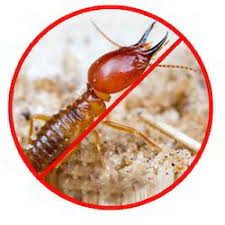Little Known Facts About Xtreme Termite Control.
Boracare is a unique borate-based product which provides prevention and control for Termites, Carpenter Ants, Powderpost Beetles and Decay Fungi. Boracare can be used on most unfinished or raw wood including plywood, particleboard, and wood structural components. Boracare can also be used to prevent subterranean termites from forming tubes on surface such as concrete, block, brick, metals, and PVC plumbing pipes found in constructions.
Please refer to the product label for the correct use rate for your specific needs. Boracare should be mixed with hot water in a bucket until it is thoroughly dispersed in the water. Boracare should never be mixed right in sprayers since the item is very thick and will clog the sprayer if it's not premixed in warm water.


Outdoors, all raw wooden elements such as fenceposts, decks, and new wooden siding can be medicated. Do not apply within two days of rain or snow. For elements which will be exposed to rain and sunlight, wait at least 48 hours for Boracare to dry before painting, staining, or sealing using a water resistant product.
Everything about Xtreme Termite Control
Termites can be one of the most destructive insects to your house. Theyre not only annoying, but they can really damage the structural integrity of your most important investment. In the southern United States it is estimated that there can be anywhere from 15-25 active termite colonies in any given acre of land.
At Do My Own Pest Control we have all the different pest control products that you need to live pest free, even from termites. .
Termites are a massive problem and a serious threat to the value and structural integrity pop over to this web-site of your property. But due to their reclusive nature, it can be hard to tell whether or not your house is troubled by these insects. Thus you ought to know the following termite signs which may indicate a problem in your house and plan to act to get rid of them if they are present. .
More About Xterm Termite Control
The most common signs of termite infestation are a raised tunnel of dirt also known as a termite mud tube that leads to the home that's under siege. These tunnels can also be found on the home itself, and are a surefire way of knowing that you have termites.
These tunnels also present a serious threat to the timber in your house, since it does not take long for these wood-destroying insects to create critical harm. .
Another of those tell-tale termite signs is finding their waste products around the wood in your house. It's usually a powder with the consistency and appearance of sawdust, and if it appears near cracked or brittle timber, you can make certain you have a problem on your hands.
Termite Control Yellow Pages Things To Know Before You Buy
Any one of these signs of termite damage are reason enough to begin a termite treatment program right away. .
The process for how to tell when you've termites is most easily done by looking to both of these signs, although there are various other methods that can help. Examining the true interior of your home in crawlspaces and underneath your house can tip you off in the event that you see that the signs of termite in home.
There are 3 different types of termites that are most likely to infest your house: Subterranean termites, drywood termites, and dampwood termites. Here's a brief description of each kind.
The Ultimate Guide To Xterm Termite Control
Subterranean: Primary reproductives are black to light yellow-brown in colour; Wings are pale or smoky grey to brown in color with few visible veins; to 3/8 inch long. Secondary reproductives are white to cream in colour, wingless, or really short wings. Employees compose most a colony and are white in colour, wingless, and to 3/8 inch long.
Drywood: All these colonies contain a caste system of employees, soldiers and reproductives, that are up to inch longer than subterranean termites. Workers compose the majority of the colony; they are about 1/8 inch long, white to cream in colour, and have no wings. Soldiers defend the colony against other insects that might attack the colony; they're white and wingless with big brown heads and limbs.
Dampwood: The Dampwood termite is sometimes known as the"rotten wood" termite and is connected with higher moisture content and timber decay. In 3/8" to" long, the dampwood termite is larger than both the drywood and subterranean. Critics defend the colony against other insects that might attack the colony; they've a flattened brown head with long dark brown to black mandibles.